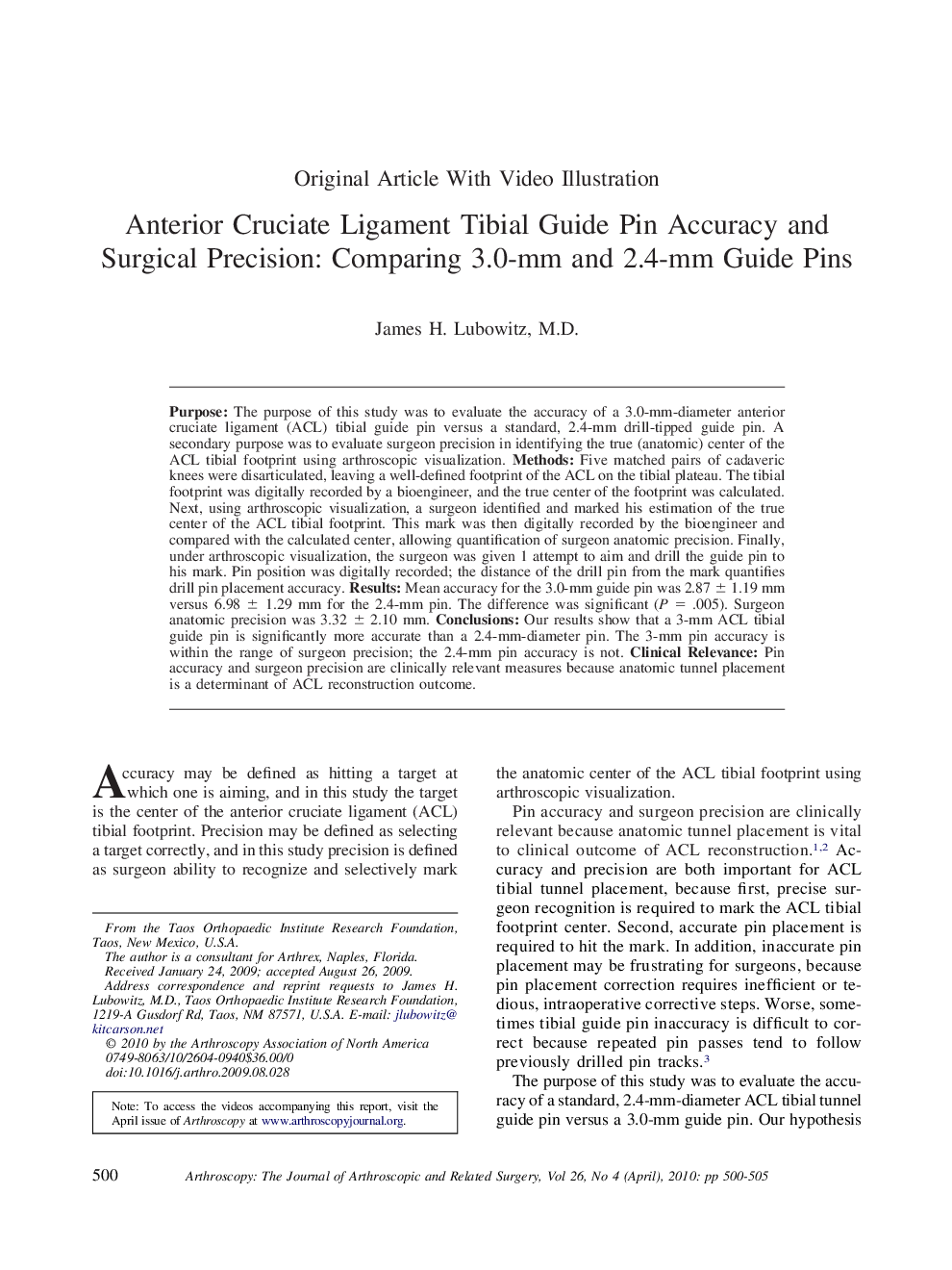| Article ID | Journal | Published Year | Pages | File Type |
|---|---|---|---|---|
| 4044501 | Arthroscopy: The Journal of Arthroscopic & Related Surgery | 2010 | 6 Pages |
PurposeThe purpose of this study was to evaluate the accuracy of a 3.0-mm-diameter anterior cruciate ligament (ACL) tibial guide pin versus a standard, 2.4-mm drill-tipped guide pin. A secondary purpose was to evaluate surgeon precision in identifying the true (anatomic) center of the ACL tibial footprint using arthroscopic visualization.MethodsFive matched pairs of cadaveric knees were disarticulated, leaving a well-defined footprint of the ACL on the tibial plateau. The tibial footprint was digitally recorded by a bioengineer, and the true center of the footprint was calculated. Next, using arthroscopic visualization, a surgeon identified and marked his estimation of the true center of the ACL tibial footprint. This mark was then digitally recorded by the bioengineer and compared with the calculated center, allowing quantification of surgeon anatomic precision. Finally, under arthroscopic visualization, the surgeon was given 1 attempt to aim and drill the guide pin to his mark. Pin position was digitally recorded; the distance of the drill pin from the mark quantifies drill pin placement accuracy.ResultsMean accuracy for the 3.0-mm guide pin was 2.87 ± 1.19 mm versus 6.98 ± 1.29 mm for the 2.4-mm pin. The difference was significant (P = .005). Surgeon anatomic precision was 3.32 ± 2.10 mm.ConclusionsOur results show that a 3-mm ACL tibial guide pin is significantly more accurate than a 2.4-mm-diameter pin. The 3-mm pin accuracy is within the range of surgeon precision; the 2.4-mm pin accuracy is not.Clinical RelevancePin accuracy and surgeon precision are clinically relevant measures because anatomic tunnel placement is a determinant of ACL reconstruction outcome.
